After yesterday’s mostly wild dog day, we decided to try something different this morning. We’ve come down the cut road to the far end of Khwai and stopped at the first hippo pool in the river that we came to. What we found was a couple of dozen hippos out of the water.
One thing about these pre-workshop warmups that Tony and I do is that there’s really no agenda, no hurry, no need to try to jump from animal to animal. What we’re trying to do is just enjoy ourselves while double-checking our gear and practicing our techniques.
Both of us have a D500 on this trip—though Tony is mostly shooting with his D810 twins—so of course one of the things I’m trying to do is verify some of the things I think I know about the autofocus system before I’m hit with student questions.
So finding a crash of hippos outside the water like this gives us multiple benefits. First, we can set up our tripods and shoot from them out of the vehicle here. Second, while the hippos aren’t terribly active at the moment we arrive, we expect at some point they will be. Third…well, they’re hippos, and they’re not doing their usual hiding in the water thing; you can actually see the whole animal rather than a couple of eyes and ears behind a snout.
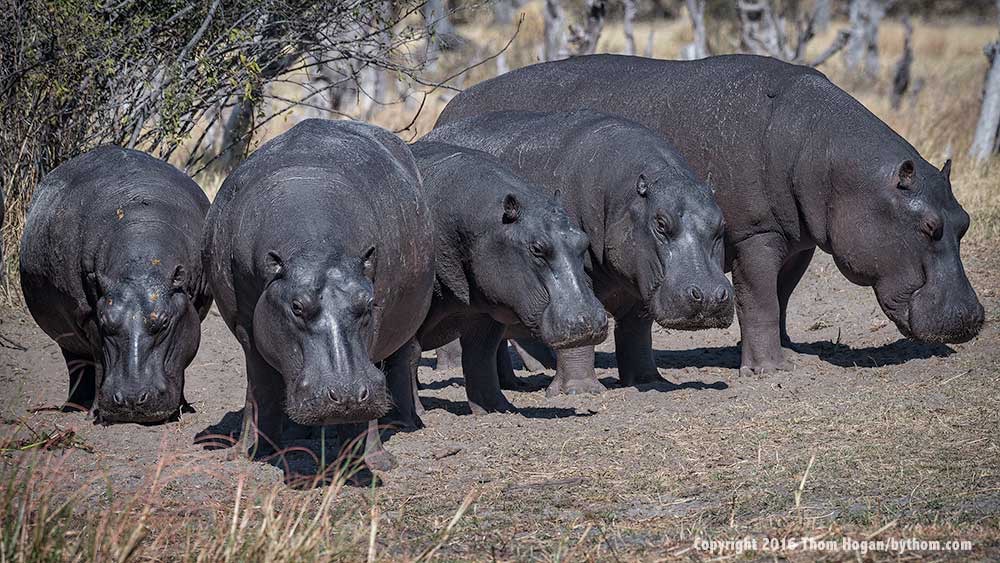
Note that I wrote “crash of hippos.” One amusing thing to me is that the latest Botswana wildlife book published seems to have a bunch of new names for groups of animals. It appears that names for a collection of any animal are getting slangy. Twenty plus years ago I was told a group of hippos was a pod. Since then, I’ve heard them called bloats, wallows, and sieges. The hippopotamus researcher I once met in Botswana used “herd” or “pod” somewhat interchangeably.
Sadly I missed the photo I wanted. So did Tony. We were both using long lenses when the inevitable happened. Actually, that’s not quite right, I was walking over to my bag to get a shorter lens the moment it happened.
What is “it”? A hippo stampede back into the water. A largish bird came flying up behind the crash (pod, bloat, wallow, siege, herd) to land on the ground and apparently spooked one of the hippos, who in turn spooked everyone else. It was an impressive sight (and sound for that matter) as all that mass entered the water at full speed and created a huge displacement wave in front of them. I’ve seen surfers on smaller waves.
Tony got what he could with his 500mm (which would be one animal, basically). I just watched.
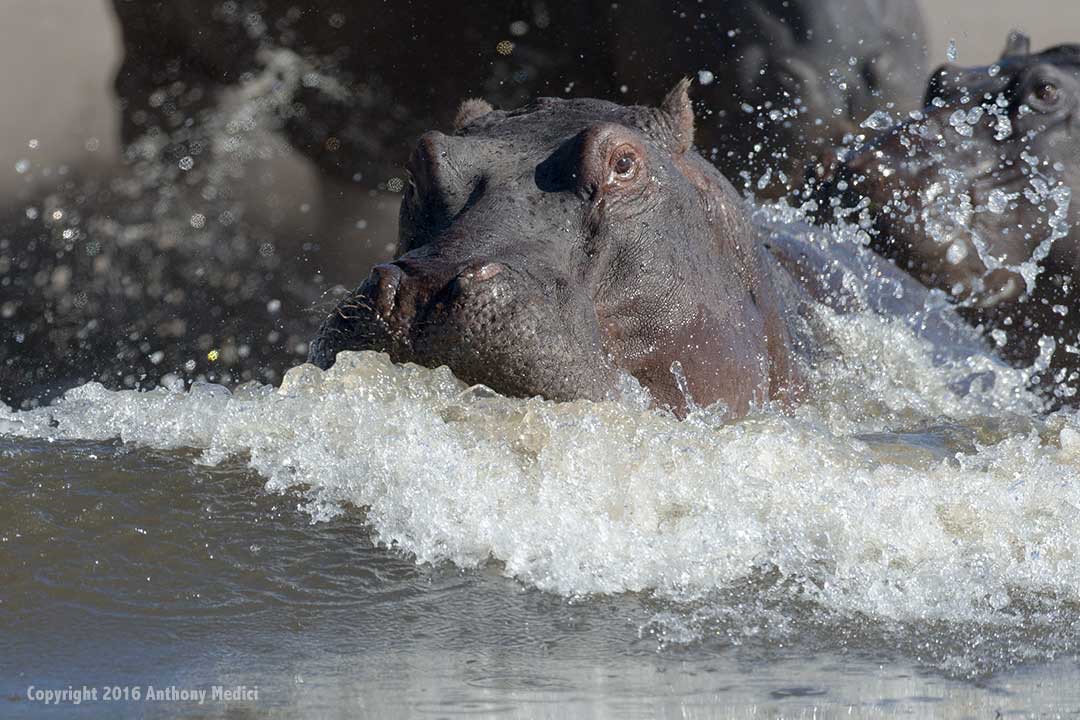
It didn’t take too long before the hippos decided that they wanted to be out of the water again. This time I was ready with my shorter lens hanging round my neck on a second body, but unfortunately, despite watching these hippos for hours, they never spooked again. On the other hand, we did get a lot of hippo-out-of-water, hippo-entering-water, hippo-exiting-water, and hippos-being-hippos shots.
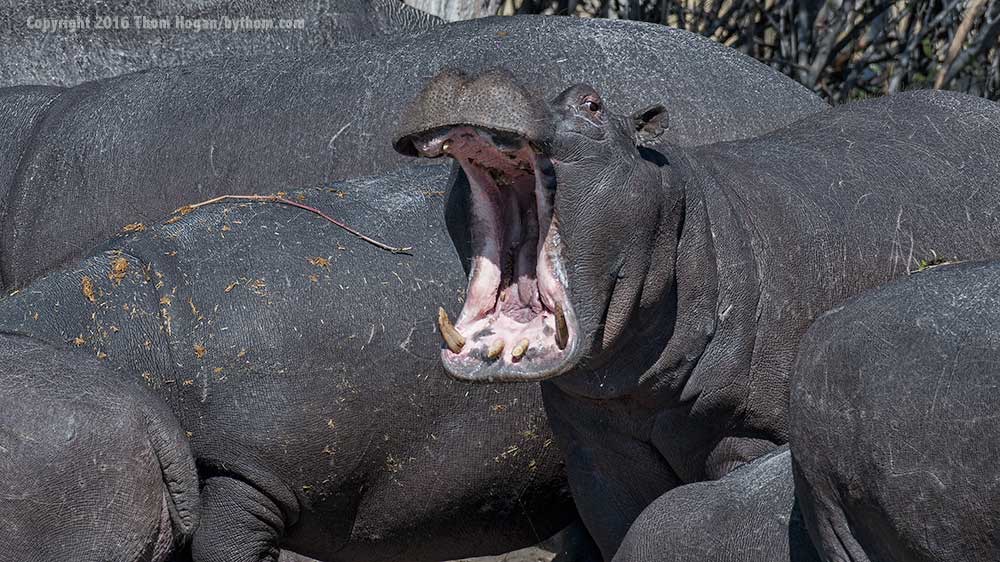
Personally, I liked how happy this hippo seemed when it found something to rest its heavy head on:
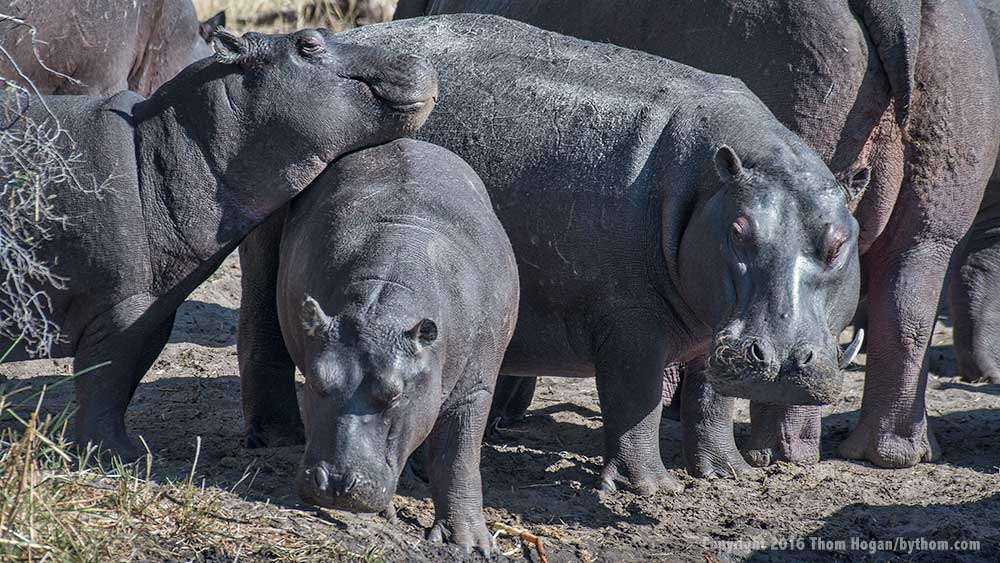
Eventually, lunch beckoned, and we drove back to camp, though we stayed along the river as much as possible to scout for the afternoon.
After lunch, we tried the opposite approach: we drove down the main road and entered the Khwai concession area from the opposite side compared to the morning. We had a lot of miscellany, mostly birds, but nothing particularly interesting.
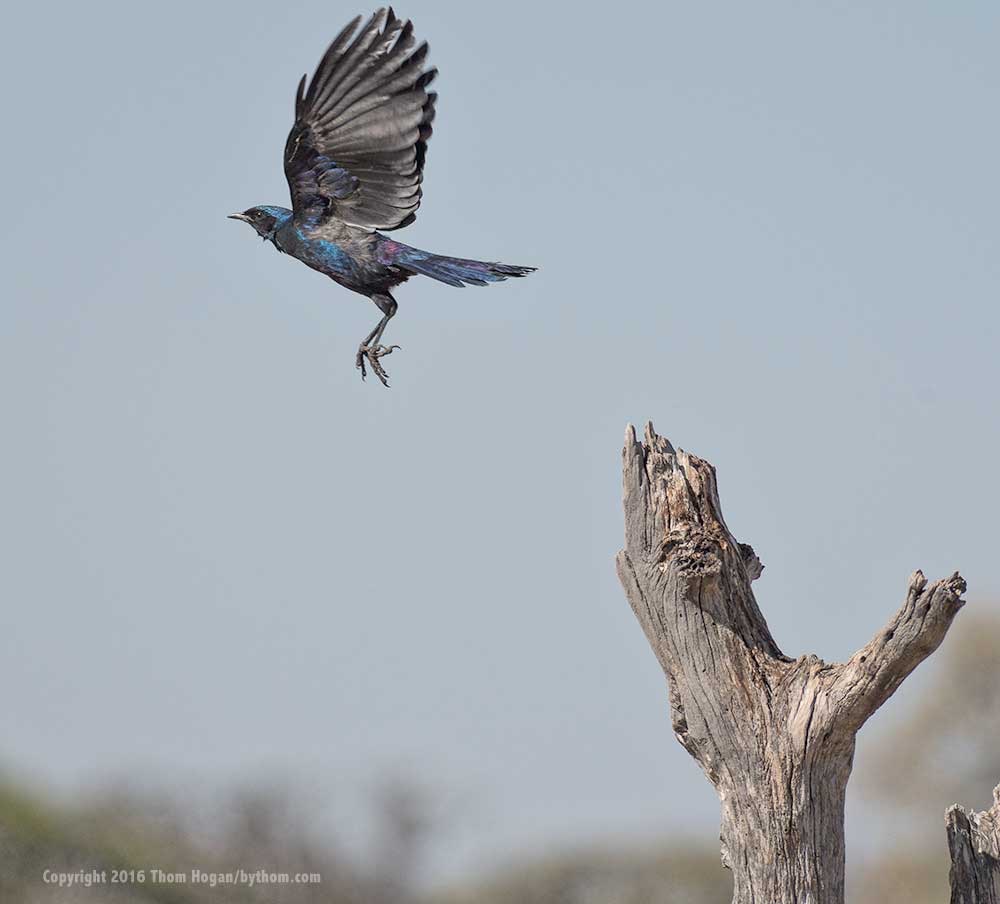
I did take some time to practice my bird-on/off-a-stick routine so that I was getting the timing down. For a bird that looks so pretty sitting in bright sunlight, that starling sure looks ugly on takeoff.
Towards the end of the day we met another vehicle that told us that there was a leopard at Leopard Pool. Go figure. So here’s another naming thing that’s tricky: OK knew where that was without asking. But not every guide/driver uses the same terminology for various places in the parks. This same pond we’re headed to has been called different things by other drivers in the past. But apparently a leopard has been hanging out in this area long enough now that some are calling the water feature Leopard Pool.
Personally, I didn’t get too excited by this leopard. A few good head shots and posed shots, but because she stuffed her kill under a bush and it was already turning quite dark by the time we arrived, trying to shoot when she ducked in to do a bit more gnawing on the carcass wasn’t going to produce any great images. Thus, once I got to ISO 6400 with this lady, I decided to call it an evening. Nice date, but I won’t be coming home with you.
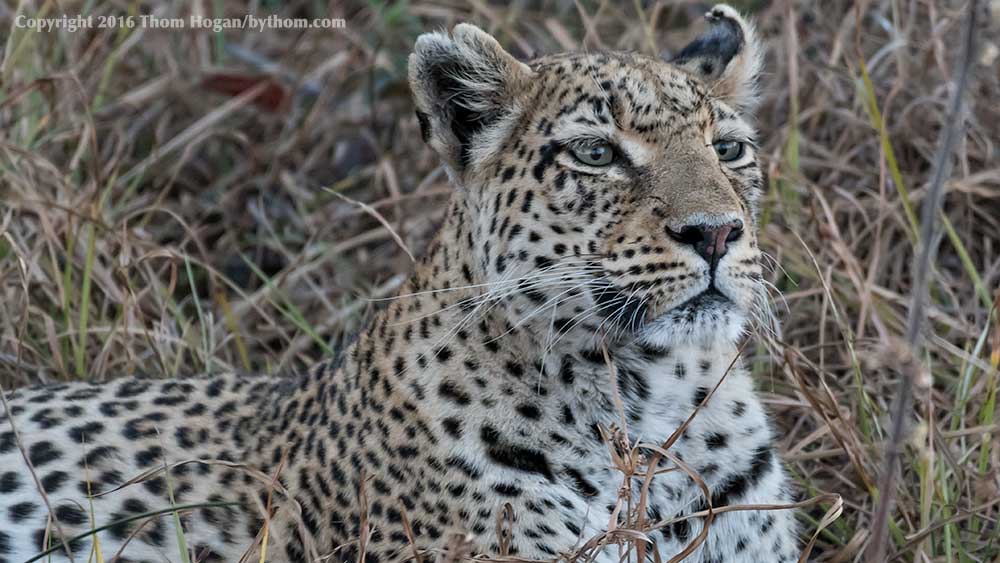
For what it’s worth, that’s a small crop from 500mm f/5.6 at 1/125 handheld (D500 at ISO 3200). The next photos I took were at ISO 6400 for obvious reasons… We actually got much closer and I started using the D7200 with the 70-200mm f/2.8, but still, the light was going very rapidly, and she eventually moved into the bush behind her to nibble on her kill, where the light was worse.
Rather than get out the spotlight and violate the leopard’s privacy, we decided to call it quits and head back to camp.
